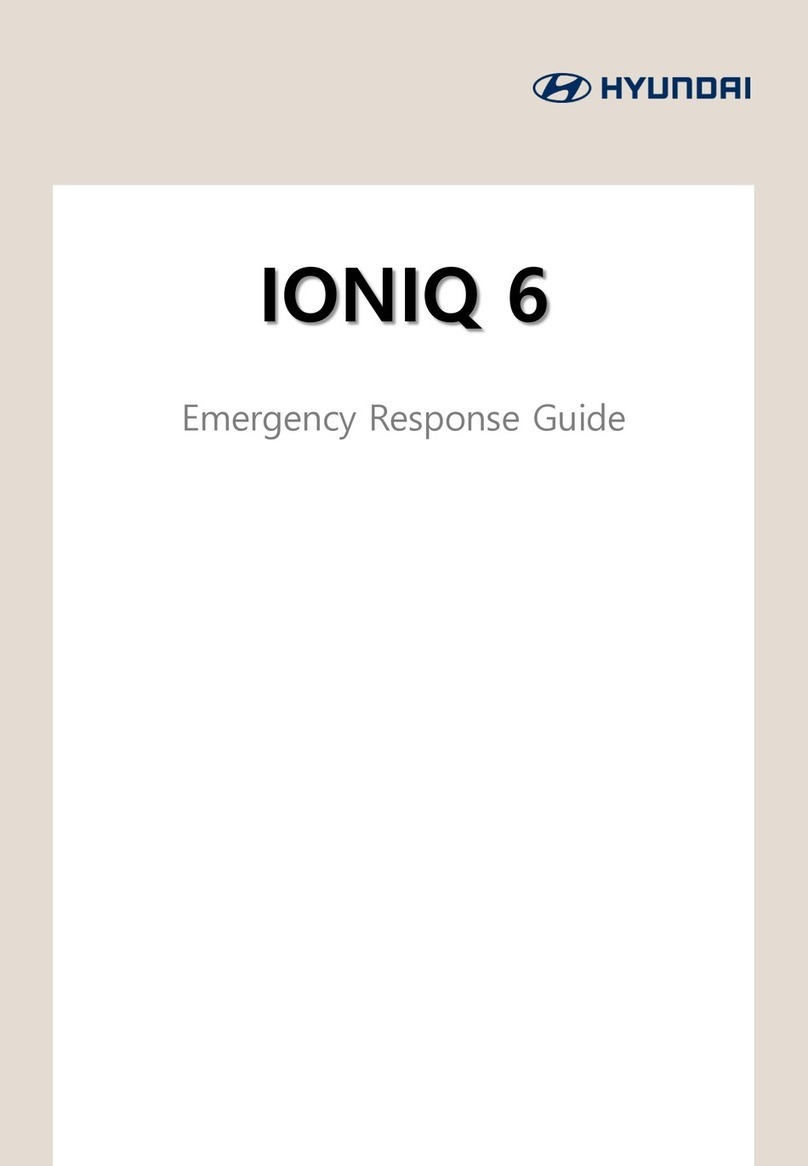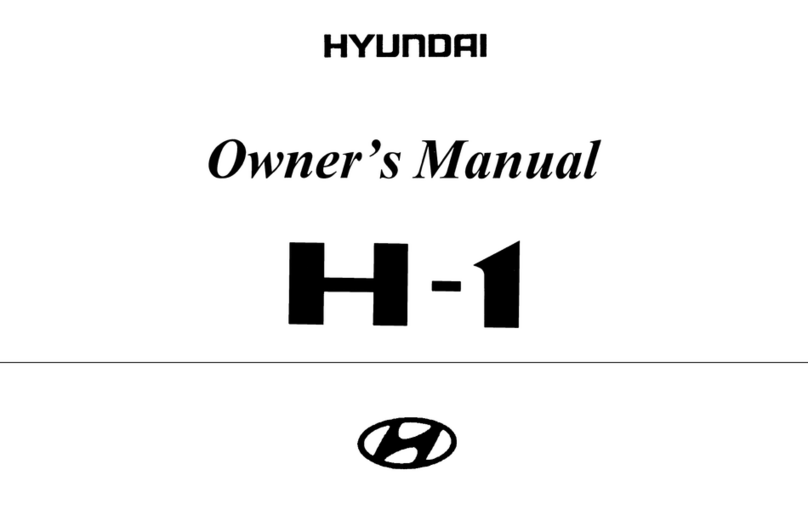※Example)
Trunk fire
2. Check for visible damage of the high
voltage battery.
3. Check the high voltage main relay for signs
of welding after shutting off the high voltage
if no visible damage is found in the high
voltage battery.
4. Measure the high voltage battery/chassis
insulation resistance.
5. Check other parts for failure.
6. Check the DTC code in the BMS ECU.
High voltage battery insulation
damaged
Remove the high voltage battery
and repair the coating/insulation.
High voltage
battery not
damaged
DTC code If a DTC code occurs, perform
the repair process outlined in the
DTC diagnosis guide.
No DTC code and
battery appears
normal
Do not replace the high voltage
battery (if the battery is damaged
and must be disposed of,
perform the high voltage battery
disposal process).
3) Collision
Classification Inspection process Inspection results Measures
Collision damage to
areas other than the
high voltage battery
mount
※Example)
Front/side collision
1. Perform visual inspections (deformation,
corrosion, wire coating, odor, connector).
2. Check for main fuse open circuit after
shutting off the high voltage.
3. Check the high voltage main relay for signs
of melting.
4. Measure the high voltage battery/chassis
insulation resistance.
5. Check other components.
6. Check the DTC code in the BMS ECU.
High voltage battery insulation
damaged
Remove the high voltage battery
and repair the coating/insulation.
High voltage
battery not
damaged
DTC code If a DTC code occurs, perform
the repair process outlined in the
DTC diagnosis guide.
No DTC code and
battery appears
normal
Do not replace the high voltage
battery (if the battery is damaged
and must be disposed of,
perform the high voltage battery
disposal process).
Collisions involving the
high voltage battery
mount
※Example)
Rear-end collision
1. Perform visual inspections (deformation,
corrosion, wire coating, odor, connector).
2. Check for main fuse open circuit after
shutting off the high voltage.
3. Check the high voltage main relay for signs
of melting.
4. Measure the high voltage battery/chassis
insulation resistance.
5. Check other components.
6. Check the DTC code in the BMS ECU.
High voltage battery insulation
damaged
⇑ Follow the measures outlined
above.
※ If the high voltage battery
mount is inaccessible due to
trunk or door damage, bend or
cut the exterior panels without
damaging the high voltage
system and carry out the
inspection and repair process.
High voltage
battery not
damaged
DTC code
No DTC code and
battery appears
normal
4) Submersion
Classification Inspection process Inspection results Measures
High voltage battery not
submerged
1. Perform a visual inspection (deformation,
corrosion, wire coating, odor, connector).
2. Check for main fuse open circuit after
shutting off the high voltage.
3. Check the high voltage main relay for signs
of melting.
4. Measure the high voltage battery/chassis
insulation resistance.
5. Check other components.
6. Check the DTC code in the BMS ECU.
High voltage battery insulation
damaged
Remove the high voltage battery
and repair the coating/insulation.
High voltage
battery not
damaged
DTC code If a DTC code occurs, perform
the repair process outlined in the
DTC diagnosis guide.
No DTC code and
battery appears
normal
Do not replace the high voltage
battery (if the battery is damaged
and must be disposed of,
perform the high voltage battery
disposal process).
High voltage battery
submerged
[Regardless of water
conditions]
1. Check for main fuse open circuit after
shutting off the high voltage.
2. Check the high voltage main relay for signs
of melting.
3. Measure the high voltage battery/chassis
insulation resistance.
4. Check the DTC code in the BMS ECU.
Carry out these measures regardless
of the inspection results
Remove the high voltage battery
and repair the coating/insulation.
Main Fuse Inspection
1. Remove the safety plug lever (A).
2. Remove the safety plug cover (A) and then remove the main fuse (B) by removing the mounting bolts.



















































